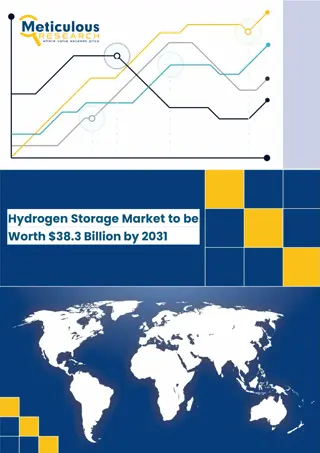Understanding Optical Storage Technology
Optical storage technology originally designed for audio offers a capacity of 650MB, providing over 70 minutes of audio playback. Data is recorded digitally on a polycarbonate disk's surface as microscopic pits. The disk is organized in a spiral track with sectors of the same length arranged in blocks. Recording involves creating a master disk using a high-intensity laser and transferring data onto polycarbonate via a die stamping process. Reading data involves detecting changes between pits and lands using a photosensor and a low-powered laser to retrieve information. Optical storage types include CD-ROM, CD-R, CD-RW, and DVD. CD-R allows for write once, read-only memory, while CD-RW offers erasable and rewrite capabilities compatible with CD-ROM drives.
Download Presentation

Please find below an Image/Link to download the presentation.
The content on the website is provided AS IS for your information and personal use only. It may not be sold, licensed, or shared on other websites without obtaining consent from the author. Download presentation by click this link. If you encounter any issues during the download, it is possible that the publisher has removed the file from their server.
E N D
Presentation Transcript
Optical Storage Originally for audio 650Mbytes giving over 70 minutes audio The disk is formed from a resin such as polycarbonate. Record data digitally (music/computer data) Data recorded as a series of microscopic pits on the surface of the polycarbonate
Optical Storage (Cont.) Organized in a single spiral track in a sequence of blocks Sectors near the outside of the disk are the same length as those near the inside Info is packed evenly across the disk in segments of the same size - scanned at the same rate by rotating the disk as a variable speed The pits are then read by the laser as a constant linear velocity (CLV)
Optical Storage - Writing Create a master disk high-intensity laser Use master to make a die to stamp out copies onto polycarbonate Pitted surface - coated with a highly reflective surface (aluminium / gold) Shiny surface - protected against dust and scratches by suing a top coat of clear acrylic A label can be silkscreened onto the acrylic
Optical Storage - Reading Change between pits and lands is detected by a photosensor -convert into a digital signal Low-powered laser retrieve information from CD The sensor tests the surface at regular intervals The beginning or end of a pit represents a 1, when no change in elevation occur between intervals, a 0 is recorded Laser - shines through the clear polycarbonate A land is smooth surface which reflects back at higher intensity Motor - spins the disk past it Intensity of the reflected light of the laser changes as it encounters a pit Lands - areas between pits
Optical Storage Types CD-ROM CD-R CD-RW DVD
Optical Storage CD-R CD-Recordable Write Once Read only Memory (WORM) Compatible with CD-ROM drives
Optical Storage CD-RW Erasable Getting cheaper Mostly CD-ROM drive compatible Can be rewritten and can used as secondary storage similar to magnetic disk
Optical Storage DVD Digital Video Disk Used to indicate a player for movies Only plays video disks Digital Versatile Disk Used to indicate a computer drive Will read computer disks and play video disks
Optical Storage DVD Technology Multi-layer Very high capacity (4.7G per layer) Full length movie on single disk Using MPEG compression
Optical Storage DVD (Cont.) High Definition Designed for high definition videos Much higher capacity than DVD Shorter wavelength laser Blue-violet range Smaller pits HD-DVD 15GB single side single layer Blu-ray Data layer closer to laser Tighter focus, less distortion, smaller pits 25GB on single layer Available read only (BD-ROM), Recordable once (BR-R) and re- recordable (BR-RE)
Magnetic Tape Tape system use the same reading/writing technique as disk system Made from polyester tape coated with magnetizable material Data on the tape are structured as a number of parallel tracks running lengthwise Serial access Slow Very cheap Backup and archive
Magnetic Tape (Cont.) Older version - parallel recording Have 9 tracks Store one byte at a time with additional parity bit Later system have 18 or 36 tracks Modern version - serial recording Data are laid out as a sequence of bits along each track similar to magnetic disks Data read and write in contiguous blocks called physical records on a tape Typical recording technique used in serial tapes is referred as serpentine recording























